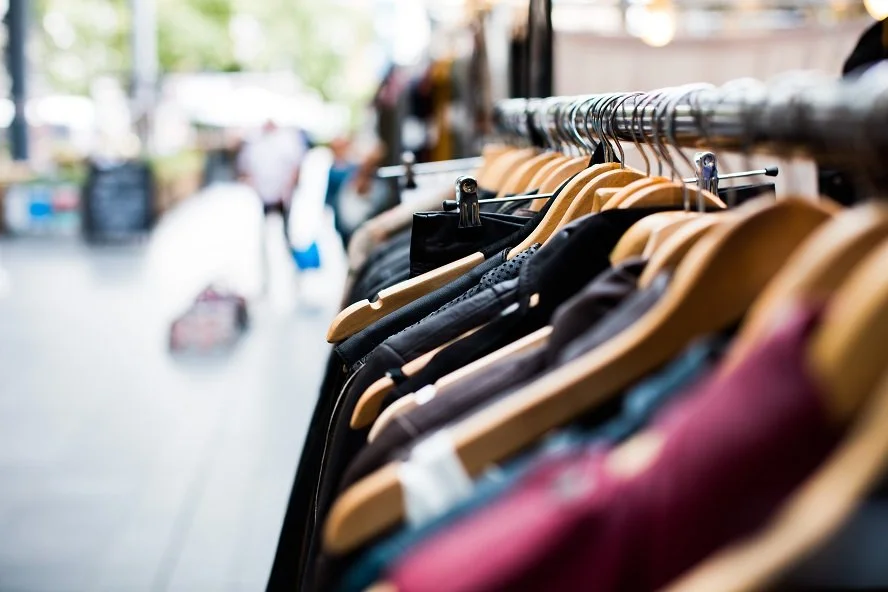Have Gen-Z Killed Fast Fashion? - A look into generational thrifting
Fast fashion, slow fashion and everything in between. I am beginning to wonder if this is a race of the Tortoise and the Hare; and who will win? If those terms didn’t baffle you already, then welcome Gen-Z, or Generation Z. This demographic cohort succeeds the problematic Millennials yet precedes the younger Generation Alpha. Gen-Z refers to the mid-to late ‘90s babies, born from 1996 into the early 2000s. The children born into computers and phones, fluent in the language of texting. A generation who have the insight of a world ‘before and after’, potentially making them the most educated of generations. This is a generation who see behind the paper straw and the hypocritical corporate greenwashing.What does Gen-Z mean for the fashion industry? To be frank about it, these young adults are turning the multibillion industry 360 degrees. Millennial mindset may have looked upon thrifting and charity shops with an air of snobbery, while Gen-Z now looks at an Enable Ireland with gleaming eyes and a sense of environmental responsibility. According to ThredUP, a sustainable fashion retail platform, one in three Gen-Zs are expected to buy second hand clothing, shoes or accessories. They are not just buying but selling too, using sites such as Depop and StockX to purge their wardrobes into profit. Due to young shoppers’ demand for second hand, the resale sector is expected to be worth €51 billion by 2023.With the abundance of research at our fingertips thanks to the internet, there is no hiding away from the startling reality of fast fashion. From being complicit in dangerous and detrimental factory conditions, to cutting corners in fair trade. The environmental implications are numerous, with crops such as cotton being water-intensive, and needing 2,000 gallons for just a pair of jeans. Cotton also requires alarming quantities of pesticides and insecticides. To produce one cotton t-shirt, it requires the equivalent of about four years of drinking water for the average person. Then, consider the electricity required to piece together the garments. More often than not, it is done via unclean sources such as coal and diesel generators. From there, train, road and plane fuelling are also to be considered. As a whole, the fashion industry produces 10% of all carbon emissions, and across the world’s ocean, textile dye is the second biggest water polluter.All that environmental debris is before the consumer has even purchased the item. Once bought, it will be worn a handful of times before falling in disrepair or discarded aside as the next trend enters the scene. In Ireland, we send 63,000 tonnes of textiles to landfill per year and half of what we donate to charity shops and clothes banks enters the global textile trade, with often devastating consequences for the countries they’re offloaded on. If the fashion world does not change, experts predict that by 2050, the fashion industry will consume more than a quarter of the world’s annual carbon budget.Climate change takes centre stage in the mind of a Gen-Z, and the youthful generation are no longer relying on their parents or their governments to make changes for the future of their children’s planet, thus taking matters into their own hands. When at the checkout, 70% of this generation say sustainability is at the forefront of their decision. Second-hand purchasing seems like the obvious choice for the youth; however, affordability is not the sole reason for opting to thrift. What we have here is a generation fuelled by the desire for authenticity and individuality. There is no more flocking to shops for accessories to a look that everyone else is wearing in school. Fashion is returning to its roots of self-expression. By thrifting, shoppers can be guaranteed to have something no one else has, therefore allowing them to stand out from the crowd. Top seller on Depop Tori López from Brooklyn explains: ‘’wearing one of a kind clothing makes me feel special; it makes me feel unique; it makes me feel happy – and if that outfit costs you under $30, all the better’’.For the older members of Gen-Z, who would have been between 12 and 14 at the beginning of the 2007 economic crash, thrifting clothes is beneficial due to its affordable price point. As financial prosperity emerged, luxury buying has remained on the cards for the youthful shoppers, but in an alternative way. Rather than buying straight from brands such as Prada or Gucci, Gen-Zs will visit resale and consignment companies such as Vestiaire Collective, or Irish business Siopaella, before the heavy purchase. Moreover, buying luxury has become easier on the mind, as consumers know that resale is a viable option down the line, thus emphasizing the longevity of an item.While trends seem to come and go, it is never a one stop visit. Fashion trends are continuously rotating out of decade-long hibernations to resurface and wow our wardrobes once again. While fashion foresting may have fast fashion retailers such as Primark scurrying to recreate iconic statements of the past, a Gen-Z will opt for the thrifted find of authenticity, from the original decade.This is not a trend that will disappear any time soon and it would be in many fashion brands’ best interest to align themselves with the morals of Generation Z, as they are the present and future of the fashion industry. At the end of this race, Gen-Z may be charged with the killing of fast fashion, however there will be no jail time in this court.


